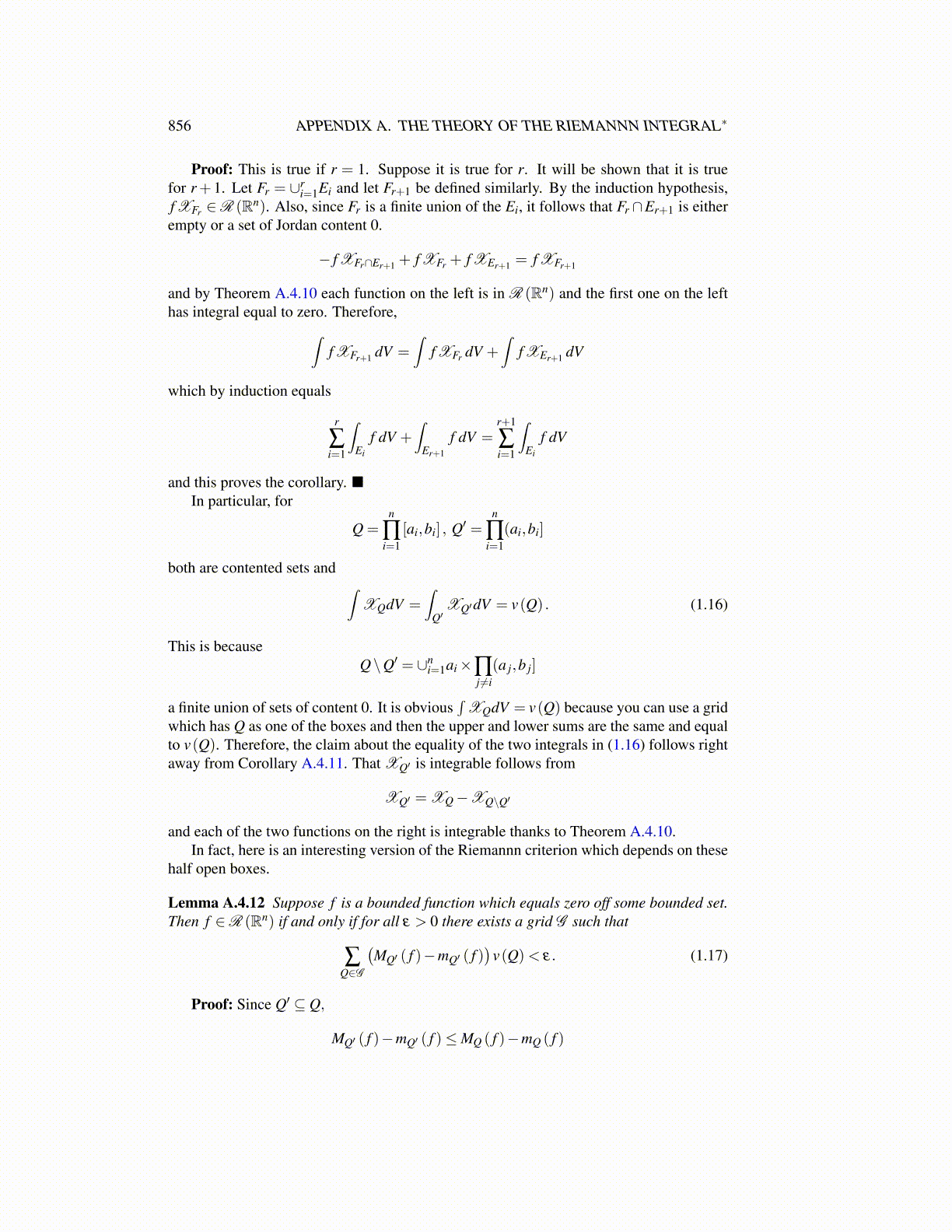
856 APPENDIX A. THE THEORY OF THE RIEMANNN INTEGRAL∗
Proof: This is true if r = 1. Suppose it is true for r. It will be shown that it is truefor r+ 1. Let Fr = ∪r
i=1Ei and let Fr+1 be defined similarly. By the induction hypothesis,f XFr ∈R (Rn). Also, since Fr is a finite union of the Ei, it follows that Fr ∩Er+1 is eitherempty or a set of Jordan content 0.
− f XFr∩Er+1 + f XFr + f XEr+1 = f XFr+1
and by Theorem A.4.10 each function on the left is in R (Rn) and the first one on the lefthas integral equal to zero. Therefore,∫
f XFr+1 dV =∫
f XFr dV +∫
f XEr+1 dV
which by induction equals
r
∑i=1
∫Ei
f dV +∫
Er+1
f dV =r+1
∑i=1
∫Ei
f dV
and this proves the corollary. ■In particular, for
Q =n
∏i=1
[ai,bi] , Q′ =n
∏i=1
(ai,bi]
both are contented sets and ∫XQdV =
∫Q′
XQ′dV = v(Q) . (1.16)
This is becauseQ\Q′ = ∪n
i=1ai×∏j ̸=i
(a j,b j]
a finite union of sets of content 0. It is obvious∫
XQdV = v(Q) because you can use a gridwhich has Q as one of the boxes and then the upper and lower sums are the same and equalto v(Q). Therefore, the claim about the equality of the two integrals in (1.16) follows rightaway from Corollary A.4.11. That XQ′ is integrable follows from
XQ′ = XQ−XQ\Q′
and each of the two functions on the right is integrable thanks to Theorem A.4.10.In fact, here is an interesting version of the Riemannn criterion which depends on these
half open boxes.
Lemma A.4.12 Suppose f is a bounded function which equals zero off some bounded set.Then f ∈R (Rn) if and only if for all ε > 0 there exists a grid G such that
∑Q∈G
(MQ′ ( f )−mQ′ ( f )
)v(Q)< ε. (1.17)
Proof: Since Q′ ⊆ Q,
MQ′ ( f )−mQ′ ( f )≤MQ ( f )−mQ ( f )